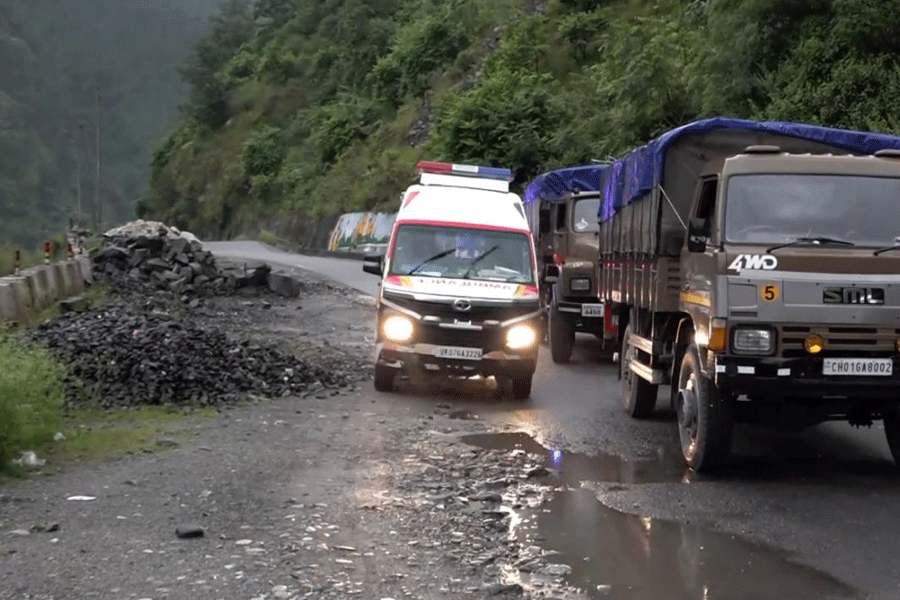 |
| Manyula, an Indian elephant in San Salvador’s National Zoo, eats from a pile of fruits on her 55th anniversary of arrival in El Salvador on Saturday. The elephant was brought in 1955 but her real age is not known. (AFP) |
New Delhi, July 24: Science brought the tiger population in the Ranthambore National Park down from the inflated figure of 46 in 2004 to 26 in 2005. Wary of similar sudden drops in the populations of other animals, the Convention on International Trade in Endangered Species (Cites) is introducing a unique software that will monitor elephant populations every month.
The software, which will monitor natural and illegal elephant mortality in ranges, will be introduced in the 10 national parks covered by the Cites Monitoring of Illegal Killing of Elephants (Mike) programme, including the eastern Dooars in Bengal, Dihing Patki and Chirang Ripu in Assam, the Garo Hills in Meghalaya and Deomali in Arunachal Pradesh.
Mike has been formulated to provide information for measuring levels and trends in poaching and help build institutional capacity for the long-term management of elephant populations.
The software ensures that data flow is efficient and helps in conducting a state-of-the-art elephant mortality census, said Arun Venkataraman, South Asia support officer for the Mike programme. The software can also give early warnings about a crisis in the park.
“Project Elephant does not have an elephant management system. For this, you need data across all levels at your fingertips to make management decisions. The software will ensure we have the status of elephants in 10 Mike sites on a monthly basis,” said Venkataraman.
The software, developed at the Cites secretariat in Geneva, has been a huge success in tracking elephant populations in Nairobi and other African countries, according to officials in the Union ministry of environment and forests.
Mike assisted the Sri Lankan government in conducting its first census at the Wilpattu elephant reserve ? once controlled by the Liberation Tigers of Tamil Eelam and now in government hands ? in August 2003. A similar exercise is planned at the Yala reserve in the country, which was hit by the tsunami of December 26, 2004.
Earlier, the programme had introduced forest range officers in Assam, Arunachal Pradesh, Meghalaya and Orissa to the use of hand-held global positioning system devices. Project Elephant authorities have now issued hundreds of such devices to its forest officers.
“At present, the elephant monitoring system and patrol protocols being used in India are very basic. The software that Mike director Nigel Hunter is sharing with us is going to streamline the system,” said Santosh Tiwari, the deputy director of wildlife preservation, northern region.
“Every time a patrol is undertaken, these protocols will ask very detailed questions. By just looking at these protocols, it will help officials monitoring the range as a whole figure out if facts have been fudged. At the end of the year, when the elephant census is collected, it will become more difficult to fudge figures,” said Tiwari.











